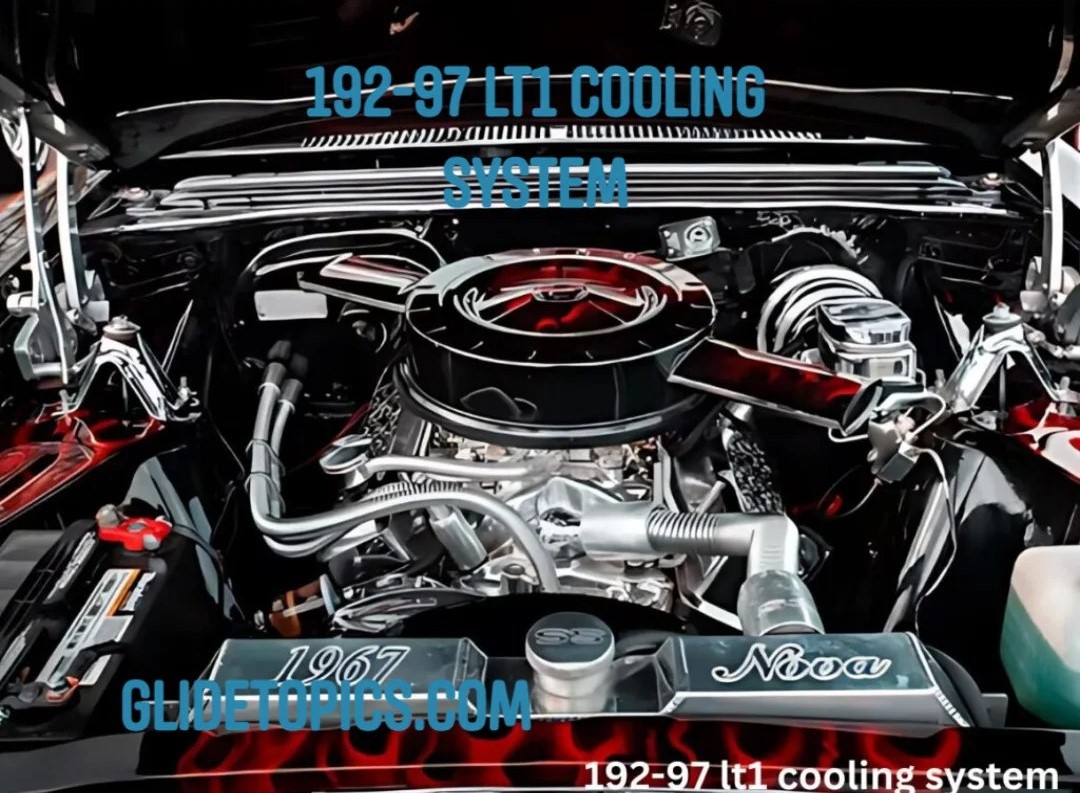Introduction
The cooling system is a critical component in any automotive engine, ensuring optimal performance and preventing overheating. The LT1 engine, which debuted in the early 1990s, has been a popular choice among car enthusiasts due to its blend of power and 192-97 lt1 cooling system efficiency. Specifically, the 192-97 LT1 cooling system is known for its unique features and capabilities. In this article, we will delve into the intricacies of this cooling system, its components, maintenance tips, common issues, and how it contributes to the overall performance of the LT1 engine.
By the end of this guide, you will have a thorough understanding of the 192-97 LT1 cooling system and its significance in maintaining engine health.
Overview of the LT1 Engine
What is the LT1 Engine?
The LT1 engine is a small-block V8 engine developed by General Motors (GM) that was first introduced in the Corvette in 1992. It features advanced technology for its time, including a multi-port fuel injection system, which enhances performance and fuel efficiency. The LT1 engine has gained a reputation for its durability and power, making it a popular choice for various applications, including performance vehicles and racing.
Key Specifications
Displacement: 5.7 liters (350 cubic inches)Horsepower: Approximately 300 hTorque: Around 340 lb-ftFuel System: Multi-port fuel injection
The Importance of a Cooling System
Function of the Cooling System
The primary function of the cooling system is to regulate the engine temperature. It absorbs heat generated during combustion and dissipates it to prevent overheating. An efficient cooling system ensures:Optimal Performance: Engines operate best at specific temperature ranges.Longevity: Overheating can lead to severe engine damage.Fuel Efficiency: A well-functioning cooling system can improve fuel economy.
Components of the 192-97 LT1 Cooling System
The 192-97 LT1 cooling system consists of several key components, each playing a vital role in maintaining optimal engine temperatures.
Radiator
The radiator is a heat exchanger that dissipates heat from the engine coolant. It allows the coolant to cool down before it circulates back into the engine. The LT1 radiator is designed for high-performance applications, featuring:
Water Pump
The water pump is responsible for circulating coolant throughout the cooling system. The LT1 features a robust water pump that ensures consistent flow and pressure, essential for effective cooling.
Thermostat
The thermostat regulates the flow of coolant based on engine temperature. It remains closed when the engine is cold, allowing it to warm up quickly, and opens when the engine reaches its optimal operating temperature.
Cooling Hoses
The cooling hoses transport coolant between the engine, radiator, and water pump. High-quality hoses are essential to withstand the heat and pressure within the cooling system.
Coolant Reservoir
The coolant reservoir stores excess coolant and allows for expansion as the coolant heats up. It also provides a convenient way to check coolant levels.
Maintenance of the 192-97 LT1 Cooling System
Routine Checks
To ensure the cooling system operates effectively, regular maintenance is crucial. Here are some key maintenance tasks:
Coolant Level Inspection
Regularly check the coolant level in the reservoir. Low coolant levels can lead to overheating, so it’s essential to top off as needed with the appropriate coolant type.
Coolant Quality
Over time, coolant can become contaminated or lose its effectiveness. It’s recommended to flush and replace the coolant every 2-3 years or as specified in the vehicle’s service manual.
Hose and Clamp Inspection
Inspect hoses for cracks, leaks, or wear. Replace any damaged hoses immediately to prevent coolant loss. Ensure that clamps are tight and secure.
Radiator Cleaning
Dust and debris can accumulate on the radiator, hindering its ability to cool effectively. Regularly clean the radiator fins to maintain optimal airflow.
Thermostat Functionality
If you notice temperature fluctuations, the thermostat may be malfunctioning. Testing and replacing the thermostat is essential for proper temperature regulation.
Common Issues with the 192-97 LT1 Cooling System
Overheating
Overheating is one of the most common issues faced by LT1 owners. Potential causes include:Low Coolant Levels: Always check and maintain proper coolant levels.Faulty Water Pump: A malfunctioning water pump can lead to insufficient coolant circulation.Thermostat Failure: A stuck thermostat can prevent coolant from flowing into the radiator.
Coolant Leaks
Coolant leaks can arise from worn hoses, a damaged radiator, or a faulty water pump. Regular inspections can help identify leaks early before they cause significant issues.
Radiator Clogs
Debris can clog the radiator, reducing its efficiency. Regular cleaning can prevent this issue, but if clogs occur, a professional flush may be necessary.
Air in the System
Air trapped in the cooling system can cause overheating and inefficient cooling. Bleeding the cooling system to remove air bubbles is crucial after maintenance or repairs.
Upgrades and Enhancements
Performance Radiators
For those looking to enhance the cooling capacity, upgrading to a high-performance radiator can significantly improve cooling efficiency, especially in high-stress situations like racing or towing.
Electric Water Pumps
Switching to an electric water pump can provide better flow rates and reduce engine load, improving overall performance and cooling.
Thermostat Upgrades
Installing a lower-temperature thermostat can help keep the engine cooler, particularly in high-performance applications.
Conclusion
The 192-97 LT1 cooling system is a vital component that ensures the engine operates efficiently and reliably. Understanding its components, maintenance needs, and potential issues is crucial for any LT1 owner. By prioritizing regular maintenance and addressing any concerns promptly, you can prolong the life of your engine and enhance its performance.
This comprehensive guide has provided insights into the LT1 cooling system, emphasizing its significance in the broader context of automotive engineering. Whether you are a seasoned enthusiast or a new owner, knowledge of your cooling system will empower you to take the necessary steps to keep your LT1 running smoothly.
FAQs
What type of coolant should I use for the LT1 engine?
It’s recommended to use a high-quality, compatible coolant, such as a mixture of antifreeze and water that meets the specifications outlined in your vehicle’s service manual.
How often should I replace the coolant?
Typically, coolant should be replaced every 2-3 years or as specified by your vehicle’s manufacturer. Regular checks will help you determine the best schedule for maintenance.
What are the signs of a failing water pump?
Signs of a failing water pump include coolant leaks, unusual noises (like whining or grinding), and overheating. If you notice these symptoms, it’s crucial to have the water pump inspected.
Can I upgrade the radiator in my LT1?
Yes, upgrading to a high-performance radiator can improve cooling efficiency, especially if you engage in high-stress driving like racing or towing.
How do I bleed the cooling system?
To bleed the cooling system, locate the bleed valve (if equipped) and open it while running the engine. This will allow trapped air to escape. Always follow specific instructions from your service manual for your vehicle.










